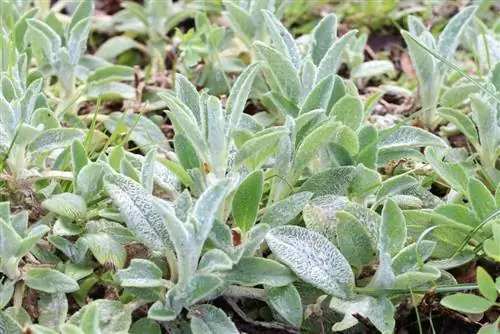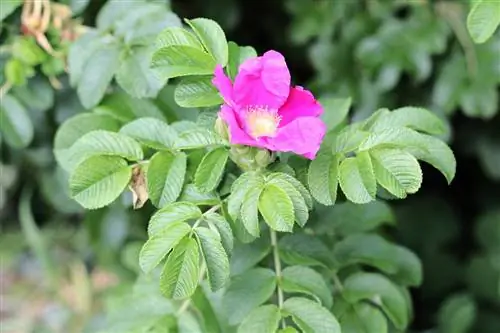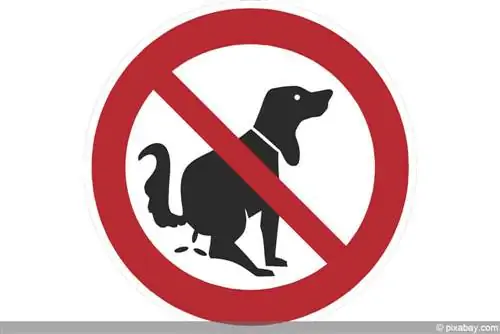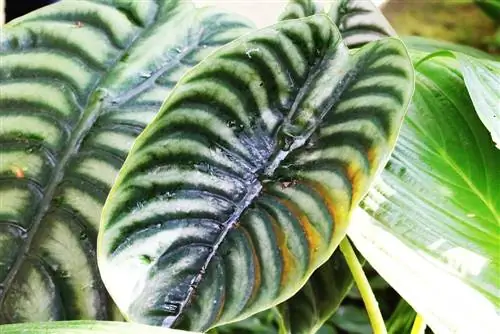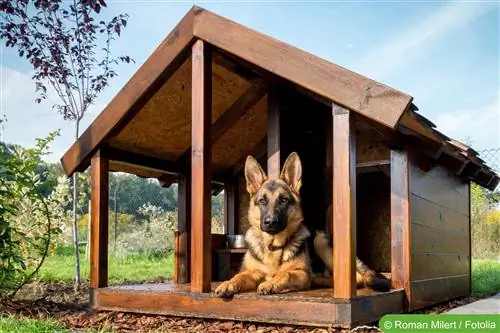- Author admin [email protected].
- Public 2023-12-17 03:39.
- Last modified 2025-01-24 12:45.
The Wollziest has the botanical name Stachys byzantina and belongs to the mint family. The plant originally comes from the Near East and is also colloquially called the donkey's ear because of its gray hairy leaves.
Location
Due to its Asian origin, the perennial feels very comfortable in a warm and light-flooded location. The dense hair prevents the dog's ear from drying out quickly, which is why it can also grow in exposed locations. Planting in gravel beds and edging flower beds is ideal. The Woll-Ziest is also suitable for planting under borders and perennials. The plant can not only be grown in the garden, but is also well suited for cultivation in a bucket or pot.
- Prefers full sun to sunny locations
- Tolerates short periods of shade in partially shaded locations
- But needs at least 3 to 4 hours of blazing sun every day
- Ideal for farmhouse, roof and rock gardens
- Fits perfectly in Mediterranean themed gardens
Tip:
The Wollziest can be used very well as a plant barrier between adjacent plants, as the ground cover suppresses the growth of other plants.
Soil & plant substrate
Stachys byzantina is a relatively undemanding plant that has only modest demands on soil quality. The plant is used to dry and poor soils in its homeland; too much moisture causes the roots to rot. For this reason, soils that are too moist should be provided with drainage made of pebbles in the planting hole when planting. If the soil is very rich, it is advisable to add expanded clay, gravel, lava granules, sand or fine grit to slim it down. The better the location and the soil are prepared, the better the donkey's ear will thrive.
- Makes do with nutrient-poor and sandy soils
- Well-drained soil is ideal
- Pay attention to humus and slightly calcareous properties
- Loosen up loamy and compact soils well
- Dry to slightly fresh substrate in the bucket
Sowing
The Woll-Ziest can be grown from seeds and sown directly into the bed in spring or autumn. The seeds for sowing are available from specialist retailers. If specimens of the plant are already growing in the garden, the seeds can be harvested after flowering. To do this, wait until the flower candles have completely wilted. Then cut these off and carefully remove the seeds. Store the seeds in a dark and dry place until next spring and then use them. Since the dog's ear is a light germinator, the seeds must not be placed too deeply in the soil, otherwise they will not germinate.

- Sow directly in the garden bed in April or September
- Alternatively, plant in seed trays and then place outdoors
- Spread seeds loosely over the surface of the soil
- Just lightly pollinate seeds with soil
- Keep the substrate evenly moist during the germination phase
- Soil should never dry out completely, but should be slightly dry
- Introduce strong seedlings individually at the desired location
Plants
Stachys byzantina is best planted in the garden during the fall months. If the soil conditions are not right, appropriate preparation is required in advance. This gives the plant perfect conditions to feel comfortable in its new location. This also reduces the subsequent maintenance effort. When planting, it is always important to ensure that the Wollziest gets enough distance from the neighboring plants. Since it forms large cushions over time, sufficient space is extremely important.
- Planting possible from March, soil should be frost-free
- Ideal planting time is between September and November
- Place potted plants at the same depth as before in the container
- Maintain a distance of 30 to 40 cm between the plants
- Do not use more than 5 to 7 plants per square meter
- After planting, press the soil surface well with your hands
- Then water the plant moderately
Watering & Fertilizing
Thanks to the wool-like hairs on the leaves and flower stalks, the Woll-Ziest can almost always regulate its water balance on its own. That's why the usual rainfall in these latitudes is usually enough to provide water. However, premature drying out can occur during long dry periods in summer. If the silvery-gray leaves of the perennial hang limply, it is dependent on additional watering units. Water the soil surface directly above the root area and do not wet the leaves. This means the plant recovers very quickly from the drought. Since the Woll-Ziest thrives primarily on poor soils, fertilization is usually not necessary. However, if there is sparse flowering or poor growth, the plant needs supplemental fertilizer information.
- Drought-loving and undemanding plant
- Keep slightly moist during the growing phase
- Only water additionally in extreme heat and dryness
- Reacts very sensitively to waterlogging and winter wetness
- If kept in a container, only water after finger testing
- Top substrate layer should be dry to a depth of 3-4 cm
- Give some compost if there are deficiency symptoms
Note:
Potted and container plants also do not need any additional fertilizer as long as they are repotted into fresh plant substrate every year.
Bloom, leaves & growth
The Wollziest is particularly popular because of its soft leaves, which invite you to pet them. When touched, the delicate leaves feel like fur. The hairs on the leaves ensure that the plant does not lose too much fluid in the heat. The donkey's ear retains its foliage over the winter months; the leaves only die off when new growth occurs in spring. As a perennial, the Woll-Ziest forms dense plant cushions over the years; this factor must definitely be taken into account when choosing a location. In summer the long and grayish flower candles and fruits are added. The inflorescences with the numerous individual flowers offer native insects plenty of pollen and nectar as welcome food.
- Leaves are velvety, felty and woolly hairy
- Oval shaped leaves, shimmering in a silvery gray color
- Length of the leaves, depending on the variety, from 25 to 50 cm
- Perennial ground cover, grows creeping
- Growth height varies between 15 to 60 cm
- Flowering time is from June to August
- Forms small and inconspicuous labial flowers
- Depending on the variety, either in red, pink, silvery-white or violet
- Ripe nuts are elongated, hairless and brown in color
Poisonous
The Wollziest has beneficial ingredients and has therefore been considered a medicinal herb since ancient times. The leaves can be used as a healing pad for skin inflammation. Brewed in tea, the flowers relieve stomach and intestinal discomfort, as well as flatulence and heartburn. However, the herbal plant must not be consumed excessively, otherwise side effects can be expected.
- Not toxic when consumed normally, but beneficial
- Overdose leads to mild symptoms of poisoning
- Planting possible in the family garden without any problems
- There is no danger to children and pets
- Use in moderation as food for rodents
Cutting
The wintergreen foliage decorates the garden in the cold season until early spring. Therefore, cutting the leaves at the end of the growth phase is not necessary. Only start pruning when the hairy leaves lose their attractive appearance. During the summer months, the most beautiful flower stems and leaves can be cut off to create decorative vase decorations. If the flower water is changed regularly, the bouquet can retain its natural beauty for many weeks.
- Cut wilted inflorescences in early autumn
- Clean out the plants after flowering and in spring
- Short previous year's leaves close to the ground at the beginning of spring
- Targeted pruning promotes compact growth
- Contain sprawling growth by cutting with a spade
Wintering
The Woll-Ziest can withstand even extremely low temperatures. However, the plant does not cope well with constant winter wetness. In addition, sensitive young plants and specimens kept in containers enjoy winter protection.
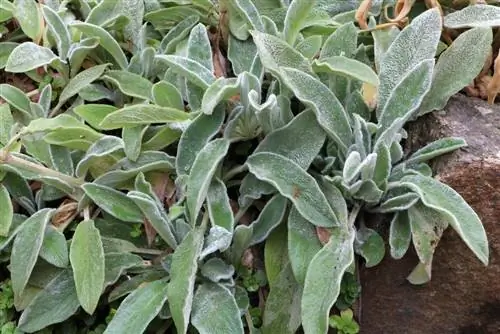
- Extremely hardy plant, can do without winter protection
- Cover young plants with brushwood in severe frosts
- To prevent moisture, place a few pine fronds over the root area
- For potted plants, wrap the pot with fleece or jute as a precaution
Varieties
Stachys byzantina is available in different varieties, which differ in both size and flower. Since the various varieties also have different growth forms, they can be optimally integrated into individual garden and terrace design.
Big Ears
- Leaves are particularly reminiscent of dog ears
- Purple to red flowers in summer
- Stems grow up to 60 cm high
- Medium green leaves with strongly branched growth
Cotton Ball
- Ground cover with creeping growth
- Pink flowers from July to August
- Woolly flower balls and evergreen leaves
- Stems resemble a cotton plant
- Reaches heights of around 40 to 60 cm
Silky Fleece
- Flowering variety with purple flowers
- Flowering period from July to August
- Leaves shimmer silvery
Silver Carpet
- Flowers very reservedly or not at all
- Forms extremely dense leaves
- Is perfect as a ground cover
- Thanks to many runners, ideal for rock gardens
Propagate
Propagation of the Woll-Ziest is just as easy as the care. With Stachys byzantina, breeding is possible both through seeds and cuttings as well as through cuttings and division. Propagation by division or with cuttings is very simple and effective.
Diseases & Pests
The Wollziest is quite resilient and not particularly susceptible to diseases and pests. However, if the plant is too wet or too dark, these factors will negatively affect its growth and he alth. Although snails disdain the plant and do not eat the leaves, they like to gather in the damp shade under the felty foliage.
- Snails lay their eggs under the leaves
- Check undersides of leaves and remove manually
- Apply organic slug pellets as a preventive measure

